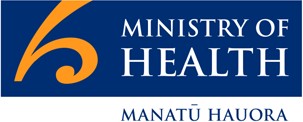



133 Molesworth
Street
PO Box 5013
Wellington 6140
New Zealand
T+64 4 496 2000
M.R.M
By email: [FYI request #17594 email]
Ref: H202116355
Tēnā koe M.R.M.
Response to your request for official information
Thank you for your request under the Official Information Act 1982 (the Act), which was
transferred from the office of the Minister for COVID-19, Hon Minister Hipkins to the Ministry
of Health (the Ministry) on 17 November 2021.
Each part of your request is responded to below:
Please provide me with the following information:
1. The date on which the abovementioned agreement [for the provision of the
AstraZeneca COVID-19 vaccination]
was signed.
1.a. The number of doses ordered under the abovementioned agreement.
1.b. The anticipated, targeted or agreed delivery date of the abovementioned doses. (If
more than one date applies please provide all of the dates).
2. The date on which the Pfizer / BioNTech agreement was signed.
2.a. The number of doses ordered under the abovementioned agreement.
2.b. The anticipated, targeted or agreed delivery date of the abovementioned doses. (If
more than one date applies please provide all of the dates).
3. The date on which the Janssen Pharmaceutical agreement was signed.
3.a. The number of doses ordered under the abovementioned agreement.
3.b. The anticipated, targeted or agreed delivery date of the abovementioned doses. (If
more than one date applies please provide all of the dates).
4. The date on which the Novavax agreement was signed.
4.a. The number of doses ordered under the abovementioned agreement.
4.b. The anticipated, targeted or agreed delivery date of the abovementioned doses. (If
more than one date applies please provide all of the dates).
The information you have requested is provided in the table overleaf.
Vaccine candidate
Date of signing
Volume
Anticipated, target, or
agreed date of shipment
AstraZeneca
3 November 2021 100,000 doses -
18 November 2021
redirection from original Information available at:
advance purchase
covid19.govt.nz/news-and-
agreement (APA)
data/latest-news/astrazeneca-
volume
arrives-in-new-zealand-
second-covid-19-vaccine-
available-this-month/
Pfizer
22
December
Original APA for 1.5
Weekly from 15 February
2020
million doses
2021. Information available at:
www.health.govt.nz/our-
work/diseases-and-
conditions/covid-19-novel-
coronavirus/covid-19-data-
and-statistics/covid-19-
vaccine-data
Janssen
22
December
Original APA for 2
Withheld under section
2020
million doses with an
9(2)(b)(ii) of the Act where the
option to purchase an
making available of the
additional 3 million
information would be likely
Novavax
15
December
Original APA for 10.72
unreasonably to prejudice the
2020
million doses
commercial position of the
person who supplied or who is
the subject of the information
5. A full disclosure explanation as to why the New Zealand public were not given the
choice of at least two vaccines from the start of the vaccination programme on 20
February 2021.
In March 2021, the New Zealand Government guaranteed that everyone eligible in New
Zealand would have access to the COVID-19 Pfizer vaccine. The decision to make the
Pfizer vaccine the primary vaccine of the vaccine programme was based on timely access to
a safe and effective vaccine. The Pfizer vaccine was originally the only vaccine with
provisional consent from Medsafe, which had been shown to be 95% effective at preventing
symptomatic COVID-19 infection, and doses were available for use in New Zealand. The
initial utilisation of one vaccine in the programme reduced the complexity of implementing
multiple vaccine protocols.
6. A full disclosure explanation as to why the AstraZeneca vaccine is only being made
available almost 9 months after the Pfizer vaccine was first made available (on 20
February 2021), and, at a time when the majority of the New Zealand public have
already had two Pfizer vaccinations.
As noted above, the Pfizer Comirnaty COVID-19 vaccine was the only vaccine option made
available for a variety of reasons.
Through discussion with AstraZeneca and the Australian Government, the Government
engaged in an agreement to divert 100,000 doses of the AstraZeneca vaccine, from
Australian manufacturing sites to New Zealand in November 2021. This process was
undertaken to ensure that an alternative COVID-19 vaccine was available to increase
vaccine uptake particularly for those people unable or unwilling to take the Pfizer vaccine,
Page 2 of 4
especially those required to be vaccinated by the COVID-19 Public Health Response
Order 2021 or their employer.
7. A full disclosure explanation as to why your office/department only made it known to
the New Zealand public in recent days that it had signed an agreement for 7.6
million doses of the Astra Zeneca vaccine, and, - more importantly - that delivery of
same would happen by around the end of November 2021. In other words, why was
this crucial information withheld from the New Zealand public given the likelyhood
that a large number of the New Zealand public would probably have chosen the
Astra Zeneca - a viral vector (non-MRNA) - vaccine rather than the Pfizer - a MRNA
- vaccine.
On 17 December 2020, the New Zealand Government announced the agreement to buy 7.6
million doses of the AstraZeneca vaccine. Information about the agreement is available at:
www.beehive.govt.nz/release/two-new-vaccines-secured-enough-every-new-zealander.
On 22 July 2021, Medsafe granted provisional approval to the AstraZeneca vaccine,
enabling domestic use and international donations of the vaccine. This was followed by a
press release on 29 July 2021 notifying the public of the vaccine’s provisional approval and
the Government’s intention to use AstraZeneca vaccines to support the Pacific region’s
vaccination efforts, while continuing with a Pfizer-based domestic vaccination programme.
Information about the AstraZeneca vaccine provisional approval is available at:
www.beehive.govt.nz/release/third-covid-19-vaccine-receives-provisional-approval. In
November 2021, New Zealand entered an agreement with the Australian Government and
AstraZeneca to obtain 100,000 doses of the AstraZeneca vaccine from Australian
manufacturing sites.
8. Given your comment about the "very small" number of people who will be able to
have the Astra Zeneca vaccine, a full disclosure explanation as to why an undisclosed
limit has been placed on this vaccine, how it was calculated what number of doses of
the Astra Zeneca vaccines would be needed by the New Zealand public, and why New
Zealand agreed to purchase 7.6 million doses of the Astra Zeneca vaccine when a) its
arrival in New Zealand comes too late for the very large number of employees who
have been mandated to be vaccinated by today's date or lose their jobs, and b) large
numbers of New Zealanders have complained over the past months that they were not
given a choice of vaccine with the Pfizer vaccine still being the only one currently
available.
This process was undertaken to ensure that an alternative COVID-19 vaccine was available
for those people unable or unwilling to take the Pfizer vaccine, particularly for those required
to be vaccinated by the COVID-19 Public Health Response Order 2021 or their employer.
This volume (100,000 doses or 50,000 courses) was derived by estimating the small number
of people unable to receive or hesitant of receiving the Pfizer vaccine. Additional
considerations included limiting vaccine wastage, recommendations from COVID-19 Vaccine
Technical Advisory Group on use of the AstraZeneca vaccine, and the option to obtain
further doses if necessary.
Lastly, please provide me with a copy of the criteria document which clearly sets out
who does and who does not qualify for having the Astra Zeneca vaccine given your
"over 18s who are unable to have the Pfizer vaccine for medical reasons, and for
people hesitant to receive the Pfizer vaccine" comment.
Please see the document
Decision to use the AstraZeneca COVID-19 vaccine: COVID-19
Vaccine Technical Advisory Group (CV TAG) recommendations attached for further
information about the decision to use AstraZeneca COVID-19 vaccines in New Zealand.
Page 3 of 4

The eligibility and exclusion criteria for the AstraZeneca vaccine can be found at:
www.health.govt.nz/our-work/diseases-and-conditions/covid-19-novel-coronavirus/covid-19-
vaccines/covid-19-vaccine-health-advice/covid-19-getting-other-vaccines/covid-19-
astrazeneca-vaccines.
I trust this information fulfils your request. Under section 28(3) of the Act, you have the right
to ask the Ombudsman to review any decisions made under this request. The Ombudsman
may be contacted by email at: [email address] or by calling 0800 802 602.
Please note that this response, with your personal details removed, may be published on the
Ministry website at: www.health.govt.nz/about-ministry/information-releases/responses-
official-information-act-requests.
Nāku noa, nā
Maree Roberts
Deputy Director-General
System Strategy & Policy
Page 4 of 4
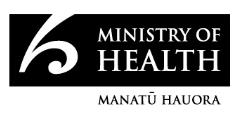
Document 1
Memo
Decision to use the AstraZeneca COVID-19 vaccine: COVID-19 Vaccine
Technical Advisory Group (CV TAG) recommendations
Date:
27th October 2021
To:
Joanne Gibbs, Director of National Operations, COVID Vaccine Immunisation
Programme
1982
Cc:
Dr Ashley Bloomfield, Director-General of Health
ACT
Allison Bennett, Manager, System Enablers, System Strategy and Policy
Dr Caroline McElnay, Director of Public Health
From:
Dr Ian Town, Chief Science Advisor
For your:
Information
INFORMATION
Purpose of report
1.
To summarise the COVID-19 Vaccine Technical Advisory Group’s (CV TAG) recommendations
on the decision to use the AstraZeneca COVID-19 vaccine (‘the AstraZeneca vaccine’).
OFFICIAL
Context 2.
In February 2021, CV TAG advice was sough
THE t for use of the Pfizer COVID-19 vaccine for
people who were 16 years and over, following Medsafe provisional approval. Cabinet agreed
that the COVID-19 Vaccine Immunisation Programme proceed with the rollout of the Pfizer
vaccine. It was noted that further advice would be provided to Cabinet on each vaccine
candidate as they became available
UNDER for use (following Medsafe approval), without knowing if
a future vaccine was going to be more suitable or effective. In order to make decisions given
the uncertainty, a Decision to Use framework was developed.
3.
In July 2021, CV TAG advice was sought on the use of the Janssen COVID-19 vaccine for
people aged 16 years and over, following Medsafe provisional approval. CV TAG advised that
there was no current indication for wide use of the Janssen vaccine, however that it could be
RELEASED
considered at an individual level where the Pfizer vaccine was not suitable e.g., anaphylaxis or
other rare side effects following the first dose of the Pfizer vaccine. Cabinet considered the
recommendations for the Decision to Use the Janssen vaccine and agreed to proceed with
taking receipt of up to 500,000 doses in October 2021 for those individuals unable to receive
the Pfizer vaccine (e.g., anaphylaxis), or for people who are hesitant to receive a messenger
RNA (mRNA) vaccine.
4.
At the time Cabinet made this decision, it was expected that Janssen’s vaccine would be
available in New Zealand in Q4 2021. However, as a result of subsequent regulatory issues
relating to the manufacture of Janssen’s vaccine, it is unlikely that Janssen will be able to
provide supply any earlier than January 2022. Given the uncertainty around accessing
Page 1 of 9
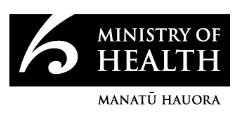
Document 1
Janssen’s vaccine in 2021, the Ministry’s Policy team are looking to secure supply of the
AstraZeneca vaccine in the coming weeks.
5.
The Ministry’s Policy team sought clinical and scientific advice from CV TAG on the use of the
AstraZeneca vaccine in New Zealand.
6.
The AstraZeneca vaccine was granted provisional approval by Medsafe for use in people
aged 18 and over in New Zealand on 22 July 2021, under section 23 of the Medicines Act,
with conditions.[1]
7.
It is a two-dose non-replicating viral vector vaccine, and the second dose is administered
between 4 and 12 weeks after the first dose. It can be stored at 2-8°C for up to 6 months.
Multiple doses may be pre-drawn from one vial and used within one hour if stored at room
temperature, or within six hours if stored at 2-8°C.[2]
1982
8.
The overall safety and efficacy of the AstraZeneca vaccine is based on analysis of pooled data
from four phase III clinical trials (COV001, COV002, COV003, and COV005) conducted
ACT in the
United Kingdom (UK), Brazil, and South Africa. At the time of analysis, 24,244 participants
aged 18 and over had been randomised and received either the AstraZeneca vaccine or
control. Additional safety of the AstraZeneca vaccine was established in a randomised phase
III clinical trial conducted in the United States, Peru, and Chile.[3, 4]
9.
The AstraZeneca vaccine provides efficacy against COVID-19 infection and severe disease.
Vaccine efficacy against symptomatic, lab-confirmed, COVID-19 at least 14 days after two
standard doses, with 4-to-12-week intervals, was 63.1% (95%CI: 51.8-71.1) in pooled data
INFORMATION
from the trials conducted in the UK, Brazil and South Africa.[3] In the US, Chile, and Peru trial,
efficacy was 74% (95%CI: 65.3-80.5) from 15 days after the second dose when given four
weeks apart.[4] Efficacy against severe disease or hospitalisation was found to be 100% (95%
CI 72.2-100%) from >21 days after the second dose across clinical trials.[3, 4]
10.
Intervals between doses varied in clinical trials, and post
OFFICIAL hoc analysis indicated that longer
intervals were associated with a stronger immune response. When the dose interval was
stratified in the initial phase III trial, an interval of <6 weeks was associated with 55.1% (95%CI
THE
33.0-69·9%) efficacy, at 6-8 weeks it was 59·9% (95%CI 32.0–6.4%), at 8-11 weeks it was 63.7%
(95%CI 28.0-81.7%) and ≥12 weeks it was 81.3% (95%CI 60.3 – 91.2%).[5]
11.
Estimates for effectiveness against viral infection ranged from 73% to 94.9% pre-Delta,[6-9]
UNDER
and against severe disease were 72.8% (95%CI: 71.8-73.8).[10] Real world effectiveness has
seen a modest decline, however it is unclear if this is due to Delta or waning efficacy of the
vaccine. Results from a UK study demonstrated high vaccine effectiveness against
hospitalisation, however it declined from 93.9% (95% CI: 91.3%-95.7%) at 1 week after the
second dose to 77% (95% CI: 70.3%-82.3%) at 20+ weeks. Effectiveness against symptomatic
COVID-19 also declined from 62.7% (95% CI: 61.7%-63.8%) at 1 week after the second dose
RELEASED
to 47.3% (95% CI: 45%-49.6%) at 20+ weeks.[11] Effectiveness against death was
94.1% (95%CI: 91.8-95.8) at 2-9 weeks after the second dose and then fell to 78.7% (95%CI:
52.7-90.4) by 20+ weeks.[11]
12.
Data about effects on transmission remain limited. Unvaccinated members of a household, in
which the primary infection is someone vaccinated with one dose of AstraZeneca, were (for
respectively AstraZeneca, and AstraZeneca and Pfizer together) around 40-50%,[12] and
30%,[13] less likely to become a secondary infection compared to those in unvaccinated
healthcare worker households.
Page 2 of 9

Document 1
13.
Continued safety monitoring is essential to understand the long-term safety profile of this
platform.
a.
Severe occurrences of various systemic reactions after the first dose were reported in
<10% 18-55 year olds in the phase I/II trial, which were reduced with the use of
prophylactic paracetamol.[14] The most frequent solicited adverse events (reported in
more than 1 in 10 people) were injection-site tenderness and pain, feeling feverish
(pyrexia), chills, myalgia, headache, malaise, arthralgia, and nausea.[14, 15] Systemic
adverse events of all severities were less common in those over 55 years compared to
younger adults, and also less common after a second dose.[16] Overall, reactogenicity
rates appear higher among ≤ 50 than > 50 year-olds, women and those with prior
symptomatic/confirmed COVID-19.[17]
1982
14.
Thrombosis with thrombocytopaenia syndrome (TTS): A very rare and serious syndrome called
thrombosis with thrombocytopaenia syndrome (TTS) has been observed following
ACT
vaccination with the AstraZeneca vaccine during post-marketing use. This includes cases
presenting as venous thrombosis, including unusual sites such as cerebral venous sinus
thrombosis (CVST), splanchnic vein thrombosis, as well as arterial thrombosis, concomitant
with thrombocytopenia.[18]
a.
The European Medicines Agency (EMA) concluded on 8 April 2021 that there was a
strong relationship between TTS coagulation disorders and administration of the
INFORMATION
vaccine, such as disseminated intravascular coagulation, CVST, as well as arterial
thromboembolic and haemorrhagic stroke. According to the EMA, a total of 1,503 cases
had been reported worldwide as of 31 July 2021, while around 592 million doses of the
AstraZeneca vaccine had been administered by 25 July 2021. The majority of the events
occurred within the first 21 days following vaccin
OFFICIAL ation but have also been reported
after this period.[19-21]
b.
Whilst specific risk factors for thromboembolism in combination with
THE
thrombocytopenia have not been identified, cases have occurred in patients with a
previous history of thrombosis, as well as in patients with autoimmune disorders,
including immune thrombocytopenia.[18]
c.
Up to 6 October 2021, there
UNDER were 424 cases of TTS reported to the UK’s MHRA
following vaccination with AstraZeneca, of which 46 were following the second dose. Of
the 424 reports, 213 occurred in women, and 207 occurred in men aged from 18 to 93
years. The overall case fatality rate was 17% with 72 deaths, six of which occurred after
the second dose. This equates to 15.2 cases reported per million first doses.[22]
d.
In Australia, the risk of developing TTS after a first dose of AstraZeneca was estimated
RELEASED
to be 20 in a million.[23] As of 17 October, there have been 156 cases of TTS assessed
as related to the AstraZeneca vaccine in Australia from approximately 12.6 million
vaccine doses. These cases most often occurred about 2-3 weeks after vaccination. The
risk of TTS after a second dose appears to be much lower than after the first dose. The
risk of dying from TTS after vaccination is reported to be approximately 1 in a million
(for people receiving a first dose), and somewhat less than this when both doses are
taken into consideration.[24]
e.
The incidence rate is higher in the younger adult age groups following the first dose
compared to older age groups. According to data from the UK’s MHRA, the incidence
Page 3 of 9
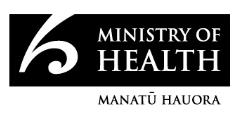
Document 1
rate is 20.9 per million doses in those aged 18-49 years, compared to 10.9 per million
doses in those aged 50 years and over.[22] According to data from Australia’s COVID-
19 vaccine weekly safety report up to 21 October 2021, the reporting rate of TTS
remains higher in people aged under 60 years (2.5 per 100,000 doses) compared to
those aged 60 and over (1.8 per 100,000 doses). Women in younger age groups seem
to be slightly more likely to develop clots in unusual locations, such as the brain or
abdomen, which have more serious outcomes. Eight people have died as a result of
TTS, and of those six were women.[24]
15.
Guillian-Barré syndrome (GBS). GBS has been reported very rarely following vaccination with
the AstraZeneca vaccine.[18]
At the EMA Pharmacovigilance Risk Assessment Committee
(PRAC) meeting from 05-08 July 2021, it was recommended that a warning for GBS following
1982
vaccination be added to the data sheet. They did not ascribe causality but concluded that it is
possible that GBS is a side effect of the vaccine.[25] On 08 September, the EMA added GBS
ACT
following vaccination as a very rare side effect to the AstraZeneca product information
sheet.[26]
16.
Capillary leak syndrome (CLS). Very rare cases of CLS have been reported in the first days
after vaccination with the AstraZeneca vaccine. A history of CLS was apparent in some of
these cases. Fatal outcome has been reported.[18] Both the UK’s MHRA and the EMA’s PRAC
recommend that people with a history of CLS should not receive the vaccine.[27, 28] On 10
June 2021, PRAC recommended that CLS be added as an adverse reaction for the
INFORMATION
AstraZeneca vaccine.
17. Several countries have restricted the use of the AstraZeneca vaccine in different age groups,
including Australia, Canada, Germany and the UK.[29-32]
a. In Australia, the Australian Technical Advisory Group on Immunisation (ATAGI) has
provided guidance about the risk-benefit for the AstraZeneca vaccine by age group.
OFFICIAL
In a large outbreak, ATAGI advises that the benefits of the AstraZeneca vaccine are
greater than the risk of rare side effects for all age groups. Where background risk of
THE
COVID-19 exposure and disease is low, AstraZeneca vaccine is recommended only for
people aged 60 and over. However, anyone aged 18 to 59 years can choose to receive
the AstraZeneca vaccine either following discussion with a qualified health
professional, or if they provide verbal or written consent. Most people have their
UNDER
second dose 12 weeks after their first, but ATAGI recommends 4 to 8 weeks between
the first and second doses in an outbreak so maximal protection against COVID-19
can be achieved earlier.[23]
b. In Canada, the National Advisory Committee on Immunisation recommends the
AstraZeneca vaccine for individuals 30 years of age and older who do not wish to wait
for an mRNA
RELEASED vaccine, expanded from its previous guidance of a higher age limit of 55
years because of concerns over TTS.[31]
c. In the UK, MHRA recommend adults aged 18-39 years with no underlying health
conditions are offered an alternative to the Oxford-AstraZeneca vaccine, if this does
not cause delays in having the vaccine.
18.
This advice should be considered as part of the Decision to Use Framework and alongside policy
considerations on the sequencing of the COVID-19 Vaccine and Immunisation Programme.
Page 4 of 9
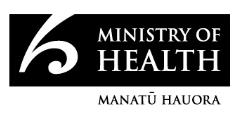
Document 1
Recommendations
19.
CV TAG met on 19 October to discuss use of the AstraZeneca COVID-19 vaccine, noting
the information provided in the Pfizer vaccine Data Sheet.
20.
CV TAG noted that:
a. The contraindications for the AstraZeneca vaccine are:[18]
i. Hypersensitivity to the active substance or to any of the excipients.
ii. Patients who have experienced major venous and/or arterial thrombosis with
thrombocytopenia following vaccination with any COVID-19 vaccine.
iii. Individuals who have previously experienced episodes of capillary leak
syndrome.
1982
b. COVID-19 disease is associated with many complications including the development
ACT
of blood clots. Administration of the AstraZeneca vaccine is rarely associated with
thrombosis and thrombosis with thrombocytopaenia syndrome (TTS). TTS has a
higher incidence among younger populations which is important to be aware of,
however the risk is much less common than thrombotic complications from the
COVID-19 disease itself.
c. In general, the Pfizer vaccine offers a higher level of protection than the AstraZeneca
vaccine. The efficacy of the AstraZeneca vaccine against symptomatic, laboratory
INFORMATION
confirmed COVID-19 at least 14 days after two standard doses, with 4-to-12-week
intervals, was 63.1% (95%CI: 51.8-71.1)[3], compared to 95% (95%CI: 90.3-97.6) for the
Pfizer vaccine.[33] However the AstraZeneca vaccine still provides high protection and
efficacy against infection, disease, and death.
d. Data are still emerging on the safety and efficacy of heterologous (“mixed dose”)
OFFICIAL
vaccine schedules from approved vaccines in New Zealand. Initial results show that
mixed schedules of the Pfizer vaccine with the AstraZeneca vaccine (for example, one
THE
dose of AstraZeneca followed some weeks later by one dose of Pfizer) is associated
with an acceptable reactogenicity profile and generates levels of anti-spike
neutralising antibody equivalent or greater than those associated with high levels of
protection in primary efficacy trials.[34-36] In the UK COM-COV study, participants
UNDER
were randomised to a first dose of Pfizer with a second dose of AstraZeneca 4-weeks
later. Antibody responses were inferior to two doses of Pfizer/BioNTech
(homologous).[36] The relevance of this to clinical effectiveness is unknown, though
the vaccine schedule was still considered to provide protection.
e. Data on safety and efficacy of the AstraZeneca vaccine in people aged less than 18
RELEASED
years and old and in pregnant women, or women who became pregnant after
receiving the vaccine, are limited. Medsafe consider available data insufficient to
assess risk-benefit in people aged less than 18 years old or pregnant women.[18]
f.
The AstraZeneca vaccine is included as part of the ComFluCOV study looking at the
safety and immunogenicity of concomitant administration of AstraZeneca or Pfizer
COVID-19 vaccines with three different seasonal influenza vaccines in adults. Most
reactions were mild to moderate, with local and unsolicited systemic reactions similar
between randomised groups. No significant difference was observed regardless of
whether the shots were given on the same day or 3-4 weeks apart.[37]
Page 5 of 9

Document 1
21.
CV TAG recommends that:
a. The COVID-19 Vaccine Immunisation Programme use the AstraZeneca vaccine as a
second-line vaccine, with Pfizer remaining the first-line and preferred vaccine.
b. Use of the AstraZeneca vaccine be restricted to people who have a contraindication to
the Pfizer vaccine, or people who would prefer to get the AstraZeneca vaccine and are
currently under a Vaccination Order, or who are unvaccinated or incompletely
vaccinated and hesitant about getting the Pfizer vaccine.
c. Within the groups outlined in 21)b, the AstraZeneca vaccine be made available to the
following eligible groups:
i. People aged 60 years and over without contraindications.
1982
ii. People aged 18 to 59 without contraindications and who prefer to receive the
AstraZeneca vaccine after discussion with a qualified health professional.
ACT
d. There is currently insufficient data on the AstraZeneca COVID-19 vaccine to
recommended it during pregnancy. Use in pregnancy should be based on an
assessment of benefits and risks by the consumer and their healthcare professional.
e. With regard to timing:
i. two doses of the AstraZeneca vaccine, given 4 to 12 weeks apart, are necessary
to be considered fully vaccinated.
INFORMATION
ii. a shorter interval of more than 4 to less than 8 weeks between the first and
second doses is recommended in an outbreak to provide earlier protection.
iii. administration of the AstraZeneca vaccine as a second dose should occur at least
28 days after the most recent dose of another COVID-19 vaccine.
OFFICIAL
iv. there be no upper limit on time since the last dose.
v. the AstraZeneca vaccine may be administered before, after, or at the same time
THE
as the influenza, MMR, HPV, diphtheria/tetanus/pertussis combination vaccine
(Boostrix), and other vaccines. The only exception to this advice is for the live-
attenuated shingles vaccine (Zostavax) where a 7-day interval, before or after
administering the AstraZeneca vaccine is advised.
UNDER
22.
CV TAG will continue to monitor the evidence and will update their recommendations as
data become available.
RELEASED
Dr Ian Town
Chief Science Advisor and
Chair of the COVID-19 Vaccine Technical Advisory Group
Page 6 of 9

Document 1
References
1.
Medsafe.
Approval status of COVID vaccines applications received by Medsafe. 2021 25 August
2021 [cited 2021 18 October]; Available fro
m: https://www.medsafe.govt.nz/COVID-19/status-
of-applications.asp.
2.
NSW Government.
COVID-19 Vaccination Program Procedures. 2021; Available from:
https://www.health.nsw.gov.au/Infectious/covid-19/vaccine/Documents/az-refrigerator-to-
administration.pdf.
3.
Voysey, M., et al.,
Single-dose administration and the influence of the timing of the booster dose
on immunogenicity and efficacy of ChAdOx1 nCoV-19 (AZD1222) vaccine: a pooled analysis of
four randomised trials. The Lancet, 2021.
397(10277): p. 881-891.
4.
Falsey, A.R., et al.,
Phase 3 Safety and Efficacy of AZD1222 (ChAdOx1 nCoV-19) Covid-19
Vaccine. New England Journal of Medicine, 2021.
1982
5.
Voysey, M., et al.,
Single-dose administration and the influence of the timing of the booster dose
on immunogenicity and efficacy of ChAdOx1 nCoV-19 (AZD1222) vaccine: a pooled analysis of
ACT
four randomised trials. Lancet, 2021.
397(10277): p. 881-891.
6.
Pritchard, E., et al.,
Impact of vaccination on new SARS-CoV-2 infections in the United Kingdom.
Nature Medicine, 2021.
7.
S, G., et al.,
COVISHIELD (AZD1222) VaccINe effectiveness among healthcare and frontline
Workers of INdian Armed Forces: Interim results of VIN-WIN cohort study. Medical journal,
Armed Forces India, 2021.
77.
8.
Sheikh, A., et al.,
SARS-CoV-2 Delta VOC in Scotland: demographics, risk of hospital admission,
and vaccine effectiveness. The Lancet, 2021.
397(10293): p. 2461-2462.
INFORMATION
9.
Issac, A., J. J Kochuparambil, and L. Elizabeth,
SARS-CoV-2 Breakthrough Infections among the
Healthcare Workers Post-Vaccination with ChAdOx1 nCoV-19 Vaccine in the South Indian State
of Kerala. medRxiv, 2021.
10.
Villela, D.A.M., et al.,
Effectiveness of Mass Vaccination in Brazil against Severe COVID-19 Cases.
medRxiv, 2021: p. 2021.09.10.21263084.
OFFICIAL
11.
Andrews, N., et al.,
Vaccine effectiveness and duration of protection of Comirnaty, Vaxzevria and
Spikevax against mild and severe COVID-19 in the UK. medRxiv, 2021: p. 2021.09.15.21263583.
THE
12.
Harris, R.J., et al.,
Impact of vaccination on household transmission of SARS-COV-2 in England.
2021.
13.
V Shah, A.S., et al.,
Effect of vaccination on transmission of COVID-19: an observational study in
healthcare workers and their households. 2021, Cold Spring Harbor Laboratory.
UNDER
14.
Folegatti, P.M., et al.,
Safety and immunogenicity of the ChAdOx1 nCoV-19 vaccine against
SARS-CoV-2: a preliminary report of a phase 1/2, single-blind, randomised controlled trial.
Lancet, 2020.
396(10249): p. 467-478.
15.
Adam, M., et al.,
Evaluation of Post-Vaccination Symptoms of Two Common COVID-19 Vaccines
Used in Abha, Aseer Region, Kingdom of Saudi Arabia. Patient Preference and Adherence, 2021.
Volume 15: p. 196
RELEASED 3-1970.
16.
Ramasamy, M.N., et al.,
Safety and immunogenicity of ChAdOx1 nCoV-19 vaccine administered
in a prime-boost regimen in young and old adults (COV002): a single-blind, randomised,
controlled, phase 2/3 trial. The Lancet, 2020.
396(10267): p. 1979-1993.
17.
Powell, A.A., et al.,
Real-world data shows increased reactogenicity in adults after heterologous
compared to homologous prime-boost COVID-19 vaccination, March-June 2021, England. Euro
Surveill, 2021.
26(28).
18.
Medsafe.
COVID-19 Vaccine AstraZeneca, Solution for injection, 5 x 1010 VP/0.5mL (TT50-
10877). Approval status of COVID vaccines applications received by Medsafe 2021 04 June
2021 [cited 2021 09 June 2021]; Available from
: https://www.medsafe.govt.nz/COVID-
19/status-of-applications.asp.
Page 7 of 9
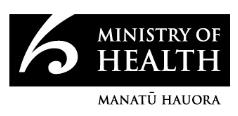
Document 1
19.
(PRAC), P.R.A.C.,
Signal assessment report on embolic and thrombotic events (SMQ) with COVID-
19 Vaccine (ChAdOx1-S [recombinant]) – Vaxzevria (previously COVID-19 Vaccine AstraZeneca)
(Other viral vaccines), in
PRAC Recommendation, E.M. Agency, Editor. 2021, EMA:
ema.europa.eu. p. 117.
20.
European Medicines Agency (EMA).
Summary of product characteristics - AstraZeneca. 2021
[cited 2021 23 August]; Available
from: https://www.ema.europa.eu/en/documents/product-
information/vaxzevria-previously-covid-19-vaccine-astrazeneca-epar-product-
information_en.pdf.
21.
EMA.
COVID-19 vaccine safety update
VAXZEVRIA AstraZeneca AB. 8 September 2021; Available from:
https://www.ema.europa.eu/en/documents/covid-19-vaccine-safety-update/covid-19-vaccine-
safety-update-vaxzevria-previously-covid-19-vaccine-astrazeneca-8-september-2021_en.pdf.
1982
22.
GOV UK.
Coronavirus vaccine - weekly summary of Yellow Card reporting. 2021; Available from:
https://www.gov.uk/government/publications/coronavirus-covid-19-vaccine-adverse-
ACT
reactions/coronavirus-vaccine-summary-of-yellow-card-reporting.
23.
Department of Health.
Vaxzevria (AstraZeneca). 2021 [cited 2021 18 October]; Available from:
https://www.health.gov.au/initiatives-and-programs/covid-19-vaccines/approved-
vaccines/astrazeneca.
24.
Therapeutic Goods Administration.
COVID-19 vaccine weekly safety report - 21-10-2021.
COVID-19 vaccine weekly safety report 2021; Available from:
https://www.tga.gov.au/periodic/covid-19-vaccine-weekly-safety-report-21-10-2021.
25.
EMA.
Meeting highlights from the Pharmacovigilance Risk Assessment Committee (PRAC) 5-8
INFORMATION
July 2021. Meeting highlights from the Pharmacovigilance Risk Assessment Committee (PRAC)
[Website] 2021 09 July 2021 [cited 2021 17 July 2021]; Available from:
https://www.ema.europa.eu/en/news/meeting-highlights-pharmacovigilance-risk-assessment-
committee-prac-5-8-july-2021.
26.
EMA.
COVID-19 vaccine safety updateOFFICIAL
VAXZEVRIA AstraZeneca AB. 8 September 2021; Available from:
https://www.ema.europa.eu/en/documents/covid-19-vaccine-safety-update/covid-19-vaccine-safety-
THE
update-vaxzevria-previously-covid-19-vaccine-astrazeneca-8-september-2021_en.pdf.
27.
MHRA,
Coronavirus Vaccine - summary of Yellow Card reporting, in
Yellow card reporting,
M.a.H.p.R. Agency, Editor. 2021, MHRA: assets.publishing.service.gov.uk. p. 20.
28.
EMA.
Meeting highlights from the Pharmacovigilance Risk Assessment Committee (PRAC) 7-10
UNDER
June 2021. News 2021 11 June 2021 [cited 2021 20 June 2021]; Available from:
https://www.ema.europa.eu/en/news/meeting-highlights-pharmacovigilance-risk-assessment-
committee-prac-7-10-june-2021.
29.
@Reuters.
Australia limits use of AstraZeneca COVID-19 vaccine to people over 60. 2021 2021-
06-17; Available fr
om: https://www.reuters.com/business/healthcare-
pharmaceuticals/australia-panel-recommend-astrazeneca-vaccines-only-above-60s-media-
RELEASED
2021-06-17/.
30.
The Independent.
Germany makes AstraZeneca vaccine available to all adults. 2021; Available
fro
m: https://www.independent.co.uk/news/germany-makes-astrazeneca-vaccine-available-to-
all-adults-astrazeneca-jens-spahn-germany-berlin-europe-b1843349.html.
31.
CTVNews.
Canadians aged 30 and older can be offered AstraZeneca vaccine, national vaccine
panel says | CTV News. 2021 2021-04-23; Available from:
https://www.ctvnews.ca/health/coronavirus/canadians-aged-30-and-older-can-be-offered-
astrazeneca-vaccine-national-vaccine-panel-says-1.5399901.
32.
BBC.
Under 40s to be offered alternative to AZ vaccine. 2021 7 May 2021 [cited 2021 15
October]; Available from:
https://www.bbc.com/news/health-57021738.
Page 8 of 9
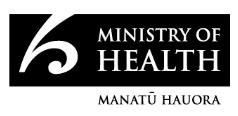
Document 1
33.
Polack, F.P., et al.,
Safety and Efficacy of the BNT162b2 mRNA Covid-19 Vaccine. New England
Journal of Medicine, 2020.
383(27): p. 2603-2615.
34.
Gross, R., et al.,
Heterologous ChAdOx1 nCoV-19 and BNT162b2 prime-boost vaccination elicits
potent neutralizing antibody responses and T cell reactivity. medRxiv, 2021: p.
2021.05.30.21257971.
35.
Borobia, A.M., et al.,
Reactogenicity and Immunogenicity of BNT162b2 in Subjects Having
Received a First Dose of ChAdOx1s: Initial Results of a Randomised, Adaptive, Phase 2 Trial
(CombiVacS). SSRN, 2021.
36.
Liu, X., et al.,
Safety and immunogenicity of heterologous versus homologous prime-boost
schedules with an adenoviral vectored and mRNA COVID-19 vaccine (Com-COV): a single-blind,
randomised, non-inferiority trial. The Lancet, 2021.
37.
Lazarus, R., et al.,
The Safety and Immunogenicity of Concomitant Administration of COVID-19
Vaccines (ChAdOx1 or BNT162b2) with Seasonal Influenza Vaccines in Adults: A Phase IV,
Multicentre Randomised Controlled Trial with Blinding (ComFluCOV). 30th September 2021.
ACT 1982
INFORMATION
RELEASED UNDER THE OFFICIAL
Page 9 of 9













